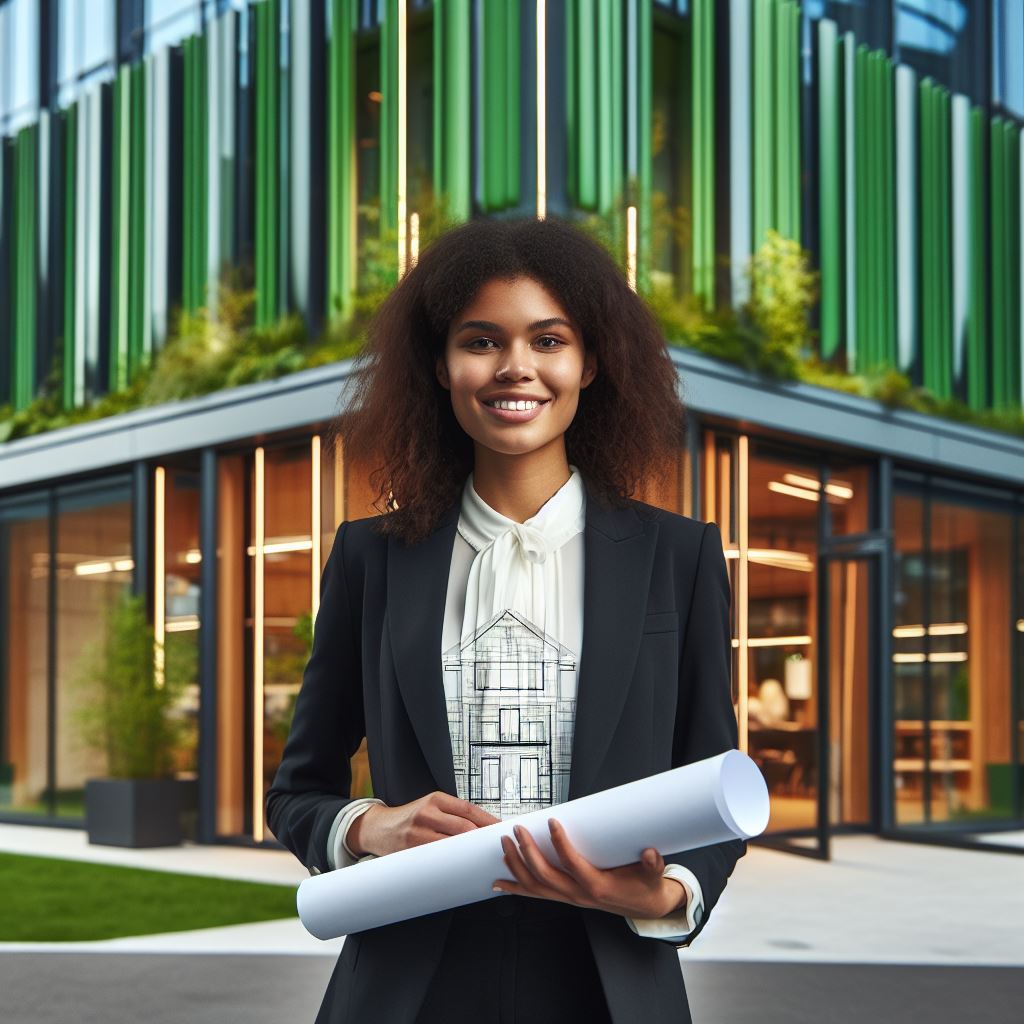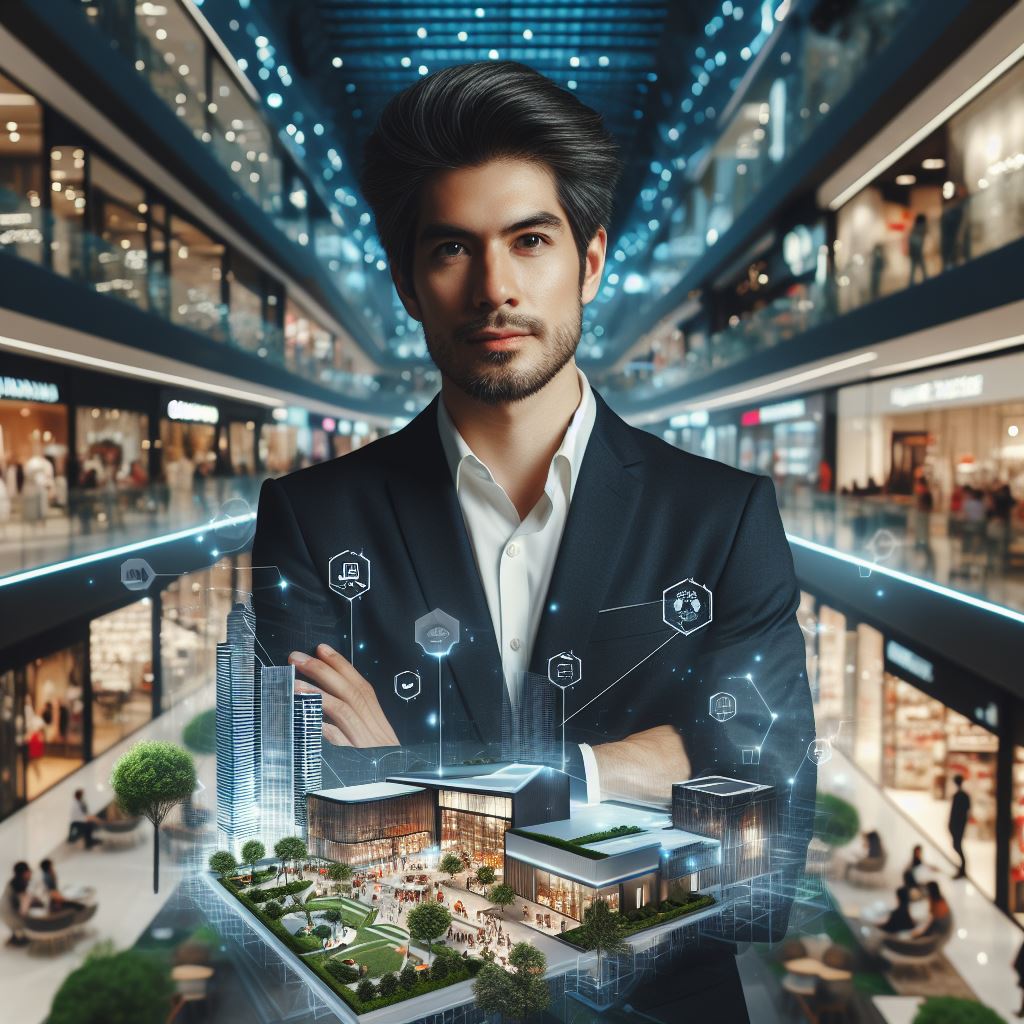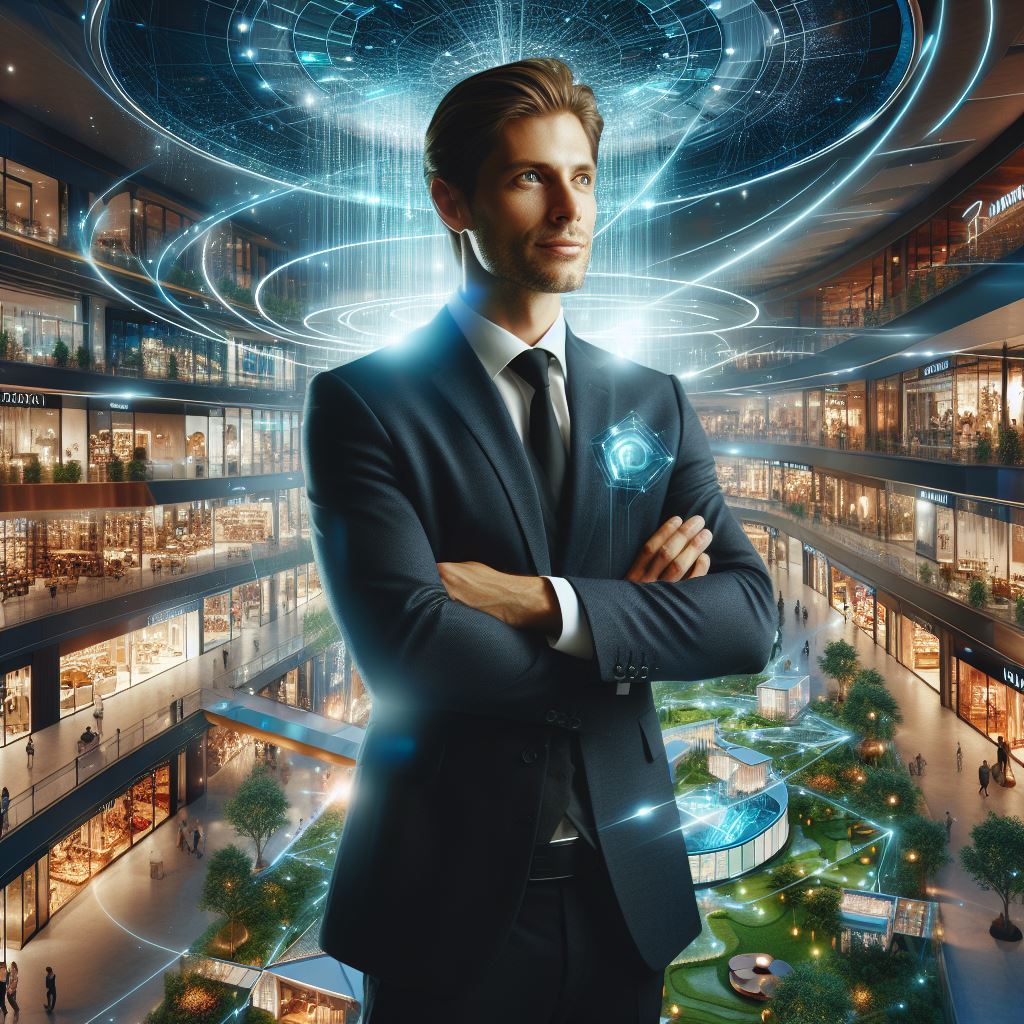Introduction
Green buildings, also known as sustainable buildings, are structures that are designed and constructed with a focus on environmental sustainability.
They prioritize energy efficiency, water conservation, and the use of eco-friendly materials.
In recent years, there has been a growing recognition of the importance of sustainability in construction.
As global warming and environmental concerns continue to escalate, it has become crucial for the construction industry to adopt practices that minimize its negative impact on the planet.
The concept of green buildings goes beyond just reducing carbon emissions.
It encompasses the efficient use of resources, including energy, water, and materials, as well as creating a healthier and more comfortable environment for occupants.
In the United States, offices are increasingly embracing green building practices.
Many companies are recognizing the potential benefits of sustainable offices, both in terms of cost savings and employee well-being.
Green buildings have been shown to lower electricity bills, reduce water consumption, and improve indoor air quality.
Moreover, sustainable offices foster a sense of corporate responsibility and enhance the company’s image as an environmentally conscious organization.
Green spaces can also promote a healthier work environment, leading to increased productivity and employee satisfaction.
As we move towards a more sustainable future, green buildings are expected to play a key role in transforming the construction industry in the United States.
The next chapters will dive deeper into the various aspects of green buildings and how they are shaping the future of US offices. Stay tuned!
Current trends and adoption of green buildings in the US
Statistics on the growth of green buildings
In recent years, there has been a significant increase in the adoption of green buildings in the United States.
This can be seen through statistics on the growth of green buildings.
According to the U.S. Green Building Council, the number of LEED-certified green buildings has been steadily rising.
In 2019, there were over 100,000 registered and certified LEED projects in the United States.
This represents a huge leap from just a few years ago when the number was around 12,000.
Furthermore, the green building market in the U.S. is expected to reach over $260 billion by 2023.
These statistics clearly demonstrate the growing popularity and acceptance of green buildings in the country.
Reasons for the increased demand for sustainable offices
So, what has led to this increased demand for sustainable offices?
Firstly, there is a growing awareness and concern about environmental issues such as climate change and resource depletion.
Organizations and individuals are realizing the need to reduce their carbon footprint and contribute to a greener future.
Green buildings offer a solution by incorporating sustainable practices and technologies that minimize energy consumption and waste.
Secondly, there are significant cost savings associated with green buildings.
Energy-efficient features and systems reduce utility bills, resulting in long-term financial benefits for owners and tenants.
Additionally, green buildings may qualify for tax incentives and grants, further reducing the overall costs.
Thirdly, green buildings provide a healthier and more productive work environment.
Natural lighting, improved air quality, and the use of non-toxic materials contribute to the well-being of occupants.
Studies have shown that employees in green buildings experience higher job satisfaction and increased productivity.
As a result of these factors, both large corporations and smaller businesses are embracing the concept of green buildings.
Major organizations like Google, Microsoft, and Apple have made significant investments in sustainable office spaces.
They have realized the long-term benefits of green buildings and understand the importance of corporate responsibility.
Role of government initiatives and regulations in promoting the adoption of green buildings
Furthermore, government initiatives and regulations have played a crucial role in promoting the adoption of green buildings.
The U.S. Green Building Council’s LEED certification system has provided a framework for sustainable building practices.
Local and state governments have enacted green building codes and requirements, making it mandatory for new constructions to meet certain sustainability standards.
These policies have incentivized developers and builders to incorporate green features into their projects.
In essence, the future of US offices lies in green buildings.
The statistics on the growth of green buildings clearly indicate the increasing popularity and acceptance of sustainable office spaces.
There are several reasons behind this trend, including environmental concerns, cost savings, and improved well-being of occupants.
With continued support from organizations, governments, and individuals, green buildings will play a significant role in creating a more sustainable and responsible future.
Read: Future of Office Spaces: US Market Predictions
Benefits of Green Buildings in Offices
Green buildings offer numerous benefits to offices in terms of their impact on the environment, economy, and social aspects.
Environmental benefits
Green buildings play a crucial role in reducing the carbon footprint of offices.
By implementing sustainable practices, such as using renewable energy sources and designing energy-efficient systems, these buildings significantly minimize greenhouse gas emissions.
In addition, green buildings promote energy efficiency and conservation.
They utilize advanced technologies and designs to optimize energy usage, leading to substantial energy savings.
This not only benefits the environment but also reduces operational costs for offices.
Water conservation is another advantage of green buildings.
These structures incorporate water-efficient fixtures, implement rainwater harvesting systems, and utilize graywater treatment methods.
Such strategies help offices minimize their water consumption, contributing to overall resource conservation.
Furthermore, green buildings prioritize waste reduction and recycling.
They encourage the implementation of recycling programs, incorporate efficient waste management practices, and design eco-friendly materials.
This not only reduces environmental degradation but also creates a cleaner and healthier workspace.
Economic benefits
Implementing green building practices in offices leads to significant economic advantages. One of the primary benefits is lower operating costs.
By optimizing energy consumption and reducing water usage, green buildings help offices save on utility bills and maintenance expenses.
Moreover, green buildings experience increased property value.
As sustainability becomes a prominent factor in real estate, the demand for environmentally-friendly buildings rises.
Consequently, these buildings attract higher valuation and command better rental rates.
Additionally, green buildings offer tax incentives and rebates to businesses.
Governments provide various financial benefits, such as tax deductions and grants, to encourage the adoption of sustainable practices.
These incentives not only assist offices in minimizing costs but also promote environmentally responsible behavior.
Furthermore, green buildings enhance employee productivity and satisfaction.
The incorporation of natural lighting, proper ventilation systems, and ergonomic designs creates a comfortable and healthy work environment.
This, in turn, leads to higher job satisfaction, improved employee well-being, and increased productivity levels.
Social benefits
Green buildings contribute significantly to the overall well-being of individuals in office spaces.
One noteworthy benefit is the improvement in health and well-being.
The use of non-toxic materials, proper ventilation, and indoor pollutant control measures ensures a healthier indoor environment, reducing the risks of respiratory issues and other health concerns.
Moreover, green buildings prioritize indoor air quality by continuously monitoring and filtering air pollutants.
This creates a healthier work environment free from volatile organic compounds (VOCs) and other harmful substances, leading to improved employee health and fewer sick days.
Furthermore, green buildings focus on noise reduction.
By incorporating soundproofing materials and efficient building designs, these structures create quieter workspaces.
This reduced noise pollution promotes concentration, productivity, and overall well-being.
Lastly, green buildings emphasize the connection to nature and biophilic design.
By integrating elements such as indoor plants, natural light, and views of green spaces, these buildings provide a connection to the natural world.
This biophilic design has been proven to reduce stress levels, enhance creativity, and foster a sense of well-being among employees.
In fact, green buildings offer a wide range of benefits to offices.
These environmental, economic, and social advantages make them the future of sustainable and responsible workplaces in the US.
Read: The Rise of Co-Working Spaces in the US
Technological advancements driving the development of green buildings
Green buildings, also known as sustainable buildings, are becoming the future in US offices because of several technological advancements.
These advancements are revolutionizing the way buildings are constructed and operated.
With the integration of smart technologies for energy management, the use of renewable energy sources, and the development of sustainable building materials, green buildings are set to become the norm in the near future.
Integration of smart technologies for energy management
One of the key technological advancements that have contributed to the development of green buildings is the integration of smart technologies for energy management.
These technologies allow for real-time monitoring and control of energy usage, enabling building managers to optimize energy efficiency.
By utilizing sensors and automation systems, buildings can adjust lighting, heating, and cooling based on occupancy levels and external conditions.
Use of renewable energy sources
The use of renewable energy sources is another crucial advancement in the development of green buildings.
Technological innovations have made it possible for buildings to generate their own electricity through solar panels or wind turbines.
This reduces reliance on fossil fuels and decreases carbon emissions, making green buildings more environmentally friendly and sustainable.
Development of sustainable building materials
Furthermore, the development of sustainable building materials has played a significant role in promoting green buildings.
Traditional construction materials, such as concrete and steel, have a high carbon footprint and contribute to deforestation.
However, technological advancements have led to the creation of eco-friendly alternatives.
For example, bamboo, a fast-growing renewable resource, is being used as a sustainable alternative to wood in construction.
Additionally, recycled materials, such as reclaimed wood and recycled steel, are being incorporated into building designs to minimize waste and environmental impact.
Other technological solutions driving the development of green buildings
In addition to these advancements, other technological solutions are also driving the development of green buildings.
Building automation systems are being utilized to optimize energy usage and improve occupant comfort.
These systems can detect movement, adjust lighting accordingly, and regulate temperature levels based on occupancy patterns.
Moreover, water conservation technologies, such as low-flow faucets and water-efficient fixtures, are saving significant amounts of water in green buildings.
The integration of these technologies in green buildings not only benefits the environment but also provides economic advantages.
Energy-efficient buildings consume less energy, resulting in lower utility bills and reduced operating costs.
Additionally, green buildings often attract tenants and investors due to their sustainability credentials, leading to increased property value and market competitiveness.
In short, technological advancements are driving the development of green buildings in US offices.
The integration of smart technologies for energy management, the use of renewable energy sources, and the development of sustainable building materials are revolutionizing the construction and operation of buildings.
These advancements not only contribute to environmental protection but also offer economic benefits.
As these technologies continue to evolve, green buildings will become the standard for a more sustainable future.
Read: Navigating Lease Terms: A Beginner’s Guide

Challenges and limitations in implementing green buildings in US offices
Implementing green buildings in US offices can face several challenges and limitations. These include:
High upfront costs and return on investment
One major challenge is the high upfront costs associated with green building construction and retrofitting.
While these investments may offer long-term benefits, such as energy savings and reduced operating costs, the initial capital required can deter organizations from adopting sustainable practices.
Lack of awareness and education
A significant barrier to the implementation of green buildings is the lack of awareness and education among office owners, tenants, and stakeholders.
Many may not be familiar with the potential benefits and cost savings associated with green design and construction.
Regulatory and bureaucratic hurdles
The implementation of green buildings in the US office sector is often hindered by regulatory and bureaucratic hurdles.
Complex permitting processes, outdated building codes, and a lack of uniform standards can impede the adoption of sustainable practices.
Resistance to change from traditional construction practices
The resistance to change from traditional construction practices can pose a significant challenge.
Office owners and developers may be hesitant to deviate from conventional methods they are familiar with, even when presented with the potential environmental and economic benefits of green buildings.
Strategies to overcome these challenges
Addressing these challenges is crucial to unlocking the full potential of green buildings in US offices. Several strategies can be employed:
- Financial incentives: Government bodies and organizations can provide financial incentives, such as tax credits, grants, or rebates, to make green building projects more economically feasible and attractive.
- Education and awareness campaigns: Raising awareness about the benefits of green buildings through targeted campaigns and educational programs can help overcome the lack of knowledge and understanding among stakeholders.
- Streamlined regulations: Streamlining permitting processes, updating building codes to reflect sustainable practices, and establishing standardized guidelines can simplify the implementation of green buildings and remove bureaucratic hurdles.
- Industry collaboration: Encouraging collaboration between industry stakeholders, including architects, contractors, and developers, can foster the exchange of knowledge and best practices, ultimately promoting the adoption of green building strategies.
- Showcasing successful case studies: Highlighting successful examples of green buildings in the US office sector can serve as inspiration and motivation for other organizations to embrace sustainable practices.
While challenges and limitations exist, the future of green buildings in US offices looks promising.
As sustainability continues to gain importance on the corporate agenda and public consciousness, there is a growing momentum towards adopting green building practices.
Overcoming these challenges will help create healthier, more efficient, and environmentally responsible office spaces.
Read: Tech Hubs: Revolutionizing US Office Spaces
Case studies of successful green office buildings in the US
Specific projects and their sustainable features
Green office buildings are becoming more popular in the US due to their sustainable features.
Here, we will look at some successful case studies that highlight these buildings’ positive impact on the environment and occupants.
Bank of America Tower (New York City, NY)
This LEED Platinum certified building incorporates features like rainwater harvesting and efficient water fixtures.
It reduces energy consumption by using solar panels, cogeneration, and high-performance glass for natural light.
The tower also has a green roof that helps reduce stormwater runoff and provides insulation.
Bullitt Center (Seattle, WA)
The Bullitt Center is a net-zero energy building that generates all of its own energy through solar panels.
It features a composting system, rainwater collection, and innovative systems for water treatment.
The building’s design maximizes natural light while reducing energy demand for lighting and cooling.
Phipps Conservatory and Botanical Gardens (Pittsburgh, PA)
Phipps is a LEED Platinum certified building that showcases sustainable architecture and design.
It has efficient heating and cooling systems, green roofs, and a rain garden to manage stormwater.
The building also promotes sustainability education and research through various programs.
Suzlon One Earth (Pune, India)
Although not in the US, Suzlon One Earth is worth mentioning for its outstanding green features.
This LEED Platinum certified building uses renewable energy, rainwater harvesting, and waste management systems.
It also has extensive green spaces, energy-efficient lighting, and uses recycled materials in construction.
Salesforce Tower (San Francisco, CA)
The Salesforce Tower is the tallest and largest LEED Platinum certified building in San Francisco.
It incorporates a sophisticated water treatment system that reduces potable water use by 76%.
The tower’s energy-efficient design includes advanced glazing, LED lighting, and optimized HVAC systems.
Positive impact on the environment and occupants
These case studies demonstrate the positive impact of green office buildings on both the environment and occupants.
By implementing sustainable features, these buildings significantly reduce energy consumption, water usage, and carbon emissions.
This not only benefits the planet but also promotes a healthier work environment for employees.
Green buildings improve indoor air quality and comfort levels, enhancing the well-being and productivity of office occupants.
They provide ample natural light, noise reduction, and improved thermal control, creating a more pleasant workspace.
Moreover, initiatives like green roofs and rainwater collection systems help manage stormwater and reduce strain on local infrastructure.
Additionally, these buildings act as educational tools, showcasing sustainable practices and inspiring others to follow suit.
Companies occupying green office spaces demonstrate their commitment to environmental stewardship and corporate social responsibility.
They attract eco-conscious employees and clients, boosting their reputation and fostering a positive brand image.
In general, green office buildings are the future in the US due to their sustainable features and positive impact on the environment and occupants.
Case studies like Bank of America Tower, Bullitt Center, Phipps Conservatory, Suzlon One Earth, and Salesforce Tower showcase the successful implementation of green practices
These buildings not only reduce energy consumption and water usage but also improve indoor air quality and overall well-being.
By choosing green buildings, companies can make a significant contribution to a greener future while reaping the benefits of a healthier and more productive workspace.
Future prospects and outlook for green buildings in US offices
Green buildings have become a significant trend in the US office sector, and their future prospects look promising.
With a focus on sustainability, there are several factors that indicate continued growth and adoption in the coming years.
Predictions for continued growth and adoption
Increasing awareness and understanding of the environmental impact of traditional buildings will drive the demand for green buildings.
The cost savings associated with energy efficiency and reduced operating expenses will incentivize more businesses to invest in green buildings.
As technology advances, innovations in building materials and systems will make green buildings more affordable and accessible for all types of offices.
The growing concern for employee well-being and productivity will lead to a greater emphasis on healthier indoor environments, which green buildings can provide.
Government initiatives and policies promoting sustainability
The US government has implemented various incentives and tax benefits for businesses that adopt sustainable practices, including green building construction.
Programs such as LEED (Leadership in Energy and Environmental Design) certification have been widely recognized and rewarded by government agencies, encouraging more offices to aim for green building standards.
Legislations promoting energy efficiency and environmental responsibility further drive the demand for green buildings as offices strive to comply with regulatory requirements.
Market trends and consumer demand
Consumers’ preference for eco-friendly products and services extends to their choice of office space, with green buildings being favored over conventional alternatives.
Major corporations and multinational companies are increasingly incorporating sustainability goals into their business strategies, leading them to prioritize green buildings for their offices.
Investors and financial institutions are recognizing the long-term value of green buildings, as they tend to attract tenants and command higher rental rates, resulting in favorable investment returns.
The green building movement is gaining momentum across various industries, and the demand for sustainable office spaces is expected to rise as more companies join the trend.
In review, the future of green buildings in US offices looks bright.
The combination of predictions for continued growth and adoption, government initiatives and policies promoting sustainability, and market trends and consumer demand all contribute to a positive outlook.
As businesses realize the benefits of green buildings in terms of cost savings, environmental impact, and employee well-being, the demand for sustainable office spaces is likely to increase.
With ongoing advancements in technology and increasing support from government agencies, green buildings are set to become the future norm in the US office sector.
Conclusion
The significance of green buildings in US offices is undeniable.
These sustainable structures not only benefit the environment but also provide numerous advantages such as energy efficiency and improved indoor air quality.
As the construction industry continues to evolve, it is crucial to embrace sustainable practices and prioritize the construction of green buildings.
By doing so, we can contribute to a more sustainable future and create healthier, more productive office spaces. Let us work together to build a greener tomorrow.




